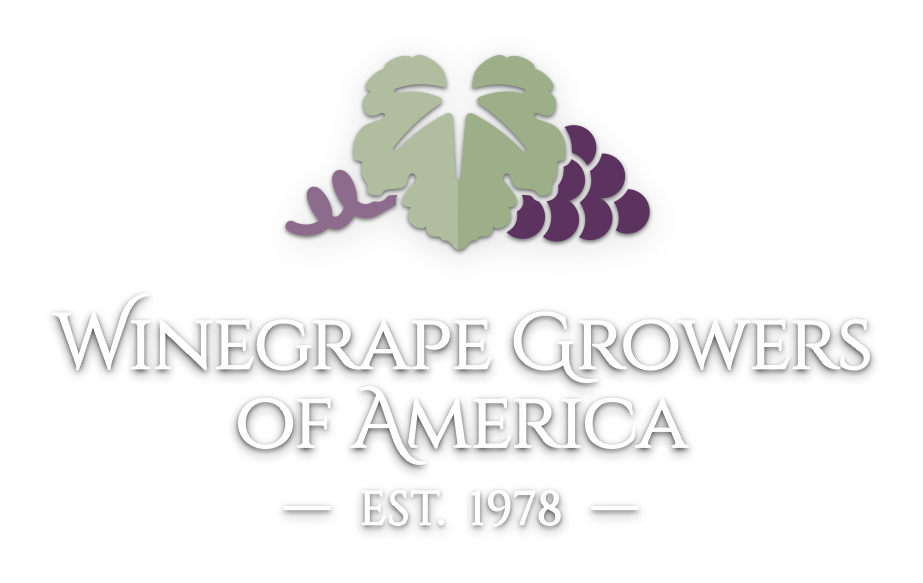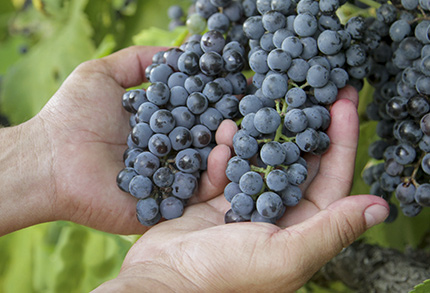Invasive Pests & Diseases
Background
The U.S. grape and wine industry supports robust funding for programs within the USDA Animal and Plant Health Inspection Service (APHIS) to detect and eradicate invasive plant pests and diseases. APHIS works with state departments of agriculture to implement pest eradication and management programs. Pests of concern include:
- European Grapevine Moth (EGVM)
- Pierce’s Disease and Glassy Winged Sharpshooter (PD/GWSS)
- Brown Marmorated Stink Bug (BMSB)
European Grapevine Moth (EGVM)
EGVM (Lobesia botrana) is a significant pest of grapes which attacks the flowers and fruit of grapes as the primary host. 2009, EGVM was found in California, the first detection in North America. California Department of Food and Agriculture (CDFA), along with the industry and USDA/APHIS, committed significant funding for the program and succeeded in rapidly reducing EGVM populations in the years that followed. The last detection in California was on June 25th, 2014. In August 2016, CDFA and USDA announced the pest officially eradicated from California, ending the quarantine status for the remaining 446 square miles region in Northern California and establishing a three-year post eradication plan for EGVM that includes significant monitoring.
Pierce’s Disease and Glassy Winged Sharpshooter (PD/GWSS)
Pierce’s disease, a fatal infection of grape vines caused by the bacterium Xylella fastidiosa (Xf) has spread in California, Texas and elsewhere by the vector, glassy winged sharpshooter (GWSS). It was first detected in California in 1989 and has invaded much of Southern California and is established in the southern San Joaquin Valley. This vigorous and difficult-to-control insect, indigenous to the southeastern U.S. and northern Mexico, threatens California’s entire grape and wine-producing community. Commercial grape varieties grown in California cannot tolerate infection by the Xf bacterium and are quickly killed or rendered uneconomical. There is no cure for Pierce’s disease.
Xylella-based diseases, such as almond leaf scorch, phony peach disease, oleander leaf scorch, alfalfa dwarf disease and many diseases affecting ornamental plants and shade trees) spread by the GWSS, threaten to devastate California grapes, tree fruits, almonds, and various ornamentals throughout the state. GWSS and Pierce’s disease also have devastating consequences for winegrape growers in Texas and other southern states. In the Southeast, Pierce’s disease and other Xyella-based diseases vectored by GWSS severely impact wine grape production and threaten other fruit crops, including Florida citrus (citrus variegated chlorosis) and Georgia peaches.
Continued federal funding for research on GWSS and Pierce’s disease to develop Xf-resistant varieties, as well as improved control methods is crucial to complement state and industry funded activities. In the second half of 2016 two new active ingredients were approved as control alternatives for GWSS, flupyradifurone (Sivanto, Bayer) and cyantraniliprole (Cyazpyr, Dupont).
Brown Marmorated Stink Bug (BMSB)
First seen in Pennsylvania in the 1990s, BMSB populations have increased and spread, devastating entire apple orchards in Mid-Atlantic states. BMSB has now been detected in nearly every state and threatens a broad array of fruit and vegetable crops, including grapes. In areas where this pest has recently arrived effective integrated pest management strategies are still being developed and additional pesticides approved. Fortunately, with multi-million dollar funding through the Farm Bill’s Specialty Crop Research Initiative (USDA-NIFA-SCRI) and in coordination with USDA’s Agricultural Research Service (ARS), the Animal and Plant Health Inspection Service (APHIS), and sixteen land grant universities throughout the U.S. new strategies and management tools are becoming available. A new control strategy will arrive this year. It involves the release of the BMSB’s natural enemy from Asia, the samurai wasp (Trissolcus japonicas), which has the potential to significantly reduce BMSB populations.










